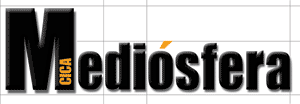Una introducción a la Educación en medios por David Considine
David Considine publica una breve introducción a la Educación en medios apoyado por una serie de recursos. Ojalá y puedan visitar su sitio: http://www.ced.appstate.edu/departments/ci/programs/edmedia/medialit/article.html
An Introduction to
Media Literacy:
The What, Why and How To's
For many years now, The National Telemedia Council has been asked if any clear, succinct yet comprehensive overview of media literacy was available. While Telemedium consistently addresses curriculum concerns, and textbooks like Visual Messages provide K-12 strategies and activities to integrate media literacy into the curriculum, there is need for a simple overview that explains to a newcomer to the field, just what media literacy is, and why we need it and where it belongs. These few brief pages then, represent our contribution to that need.
by David Considine
(Published in the Fall 1995 issue of Telemedium, The Journal of Media Literacy,Volume 41, Number 2)
http://www.ced.appstate.edu/departments/ci/programs/edmedia/medialit/article.html
What is Media Literacy and why do you need it?
Who teaches Media Literacy?
Approaches to Media Literacy
Some Principles of Media Literacy
References and Resources
First, the "why?"
In an age when most Americans get most of their information from television not textbooks, pictures not print, we need a wider definition of what it means to be literate. Many of us grew up hearing the proverbs and adages like these: You Can't Judge a Book By Its Cover, A Picture is Worth a Thousand Words.
These words are even truer today in an age not only of computers and telecommunications but of virtual reality and imageneering. Today's technologies represent a startling fusion of sight and sound that frequently make it difficult for us to discern illusion from reality, fact from fiction. Special effects like those seen in movies like "JFK" and "Forrest Gump" merge the past with the present, color with black and white, the dead with the living, fact with fiction in such a way that the real truth can often be confused with the reel truth.
lt would be one thing if such technologies were employed only in the entertainment media, but increasingly these production values are evident in broadcast news. A reporter in a TV studio is, for example, magically transported by computer onto the White House lawn. The mere location lends power, authority and therefore credence to the reporter and the story. This form of set decoration or window dressing is deceptive, especially when it is utilized during a program which is meant to provide us with factual information that we can rely upon.
While such techniques may render the program more visually pleasing, they represent the emergence of infotainment and the decline of objective, neutral and reliable news. Given these trends, responsible citizens need to possess the ability to question the accuracy and authenticity of information in all its forms, not just print. They need the ability to make reflective critical responses to this information. But media literacy is about more than just consuming information. A media literate individual is able to produce, create and successfully communicate information in all its forms, not just print. A simple example of why these skills are now necessary is evident in the emergence of CD-ROM. This technology represents a fusion of two previously discrete technologies, the computer and the video camera. It also represents a fusion of two information formats, print and picture.
As we approach the end of the 20th century Americans in the workplace as in their daily lives will increasingly need the information and communication skills necessary to live and work with multiple formats. Rather than simply typing print from page to screen, they will work with still and moving images, graphics and text. The organization and arrangement of these elements on the screen will require expertise in visual language and human perception. It will require individuals skilled in the design and display of information that is electronically produced, stored and accessed.
A Definition
Media literacy, then, is an expanded information and communication skill that is responsive to the changing nature of information in our society. It addresses the skills students need to be taught in school, the competencies citizens must have as we consume information in our homes and living rooms, and the abilities workers must have as we move toward the 21st century and the challenges of a global economy.
In North America, while a phrase or word may change here or there, most media literacy organizations and leaders accept this definition of media literacy: The Ability to
Access
Analyze
Evaluateand
Communicateinformation in a variety of format
including print and nonprint.
Like traditional literacy it includes the ability to both read (comprehend) and write (create, design, produce). Further, it moves from merely recognizing and comprehending information to the higher order critical thinking skills implicit in questioning, analyzing and evaluating that information.
Considine Appointed Chairperson 2003 National Conference
David Considine: Resume
Media Literacy: 1999 National Conference
Media Literacy and Adolescents
Media Literacy: Barry Duncan's Class at Appalachian
Media Literacy and Juvenile Justice
Media Literacy and North Carolina Curriculum Connections
Media Literacy and Presidential Politics
Media Literacy: ASU's Management Model
Media Literacy Class Online Spring 2002
Media Literacy: First National Media Literacy Conference at ASU
Media Literacy: From Television to Telling-Vision
Media Literacy, Health and Medical Issues
Media Literacy Hot Links
Media Literacy in North Carolina
Media Literacy: The Purposes and Rationale
Media Literacy Stipends & Summer School 2001
Media Literacy: Summit 2000: Reflections on Toronto Conference
Media Literacy: Teachers Talk Media Literacy
Putting the ME in MEdia: Student Reflections
Support Telemedium: The Journal of Media Literacy
Tyner to Teach in New York July 2002



















No hay comentarios.:
Publicar un comentario